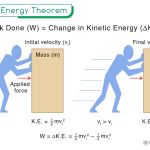Fermi-Dirac Distribution
The Fermi-Dirac distribution is a statistical function that describes the probability of a quantum state being occupied by a fermion (a particle with half-integer spin, such as an electron) at a given energy and temperature. Governed by the Pauli Exclusion Principle, which prohibits two fermions from occupying the same quantum state simultaneously, the distribution ensures that the occupation probability is influenced by the availability of the state, the energy level, and the thermal energy of the system. This principle is crucial for understanding the behavior of fermions in solids, metals, semiconductors, and astrophysical systems. To better understand the Fermi-Dirac distribution, it is helpful to explore its mathematical representation.
Mathematical Representation
The Fermi-Dirac distribution is mathematically expressed as:
Where:
- E: the energy level of a quantum state.
- f(E): the probability of finding a Fermion with energy E.
- EF: the Fermi level, the energy level at which the probability of occupancy is 50% at a given temperature, i.e., f(E) = 0.5
- kB: Boltzmann’s constant, relating energy to temperature.
- T: the absolute temperature in Kelvin.
Temperature Dependency
The system’s temperature plays a critical role in determining the sharpness of the transition between occupied and unoccupied states near the Fermi energy.
Absolute Zero (T = 0 K)
At absolute zero, the Fermi-Dirac distribution simplifies dramatically. All energy states below the Fermi energy (EF) are fully occupied (f(E) = 1), while all states above EF are completely empty (f(E) = 0).This results in a sharp boundary at EF, distinctly separating occupied and unoccupied states. The physical interpretation is straightforward: at T = 0, the system is in its lowest energy configuration, and the fermions fill up the available energy states starting from the lowest until the total energy of the system is minimized.
Finite Temperatures (T > 0 K)
At temperatures above absolute zero, the sharp boundary at EF begins to blur due to thermal excitation. Fermions gain energy to occupy states above EF, leaving some states below EF vacant. This “smearing” effect becomes more pronounced with increasing temperature, widening the transition region around EF and flattening the distribution over a broader energy range. These changes significantly impact the physical properties of systems, as only electrons near EF contribute to thermal and electrical processes.
Graphical Representation
The plot of f(E) versus E is particularly helpful in illustrating these effects. For T=0, the plot shows a step-like function, whereas for T>0, the step transitions into a gradual slope, becoming less steep as the temperature increases. These visualizations not only reinforce the concept but also highlight the critical role of EF as the dividing line between mostly occupied and mostly unoccupied states.
Applications
- Condensed Matter Physics: The Fermi-Dirac distribution describes how electrons populate energy states in metals and semiconductors, influencing conductivity and band structure. It helps predict properties like electron density and energy levels at different temperatures.
- Electronics: The Fermi-Dirac distribution governs the behavior of charge carriers in semiconductors, determining current flow and device performance. It underpins the operation of transistors, diodes, and other electronic components.
In addition to materials science, the Fermi-Dirac distribution has significant implications for understanding thermal and astrophysical systems.
- Thermal Properties: At low temperatures, the distribution explains why the specific heat of solids deviates from classical predictions, as only electrons near the Fermi energy contribute significantly to thermal excitation.
- Astrophysics: The distribution is crucial for understanding degenerate matter, where fermions like electrons and neutrons form extremely dense states, such as in white dwarfs and neutron stars. It provides insights into the equilibrium and pressure in such extreme environments.
-
References
Article was last reviewed on Wednesday, December 11, 2024








